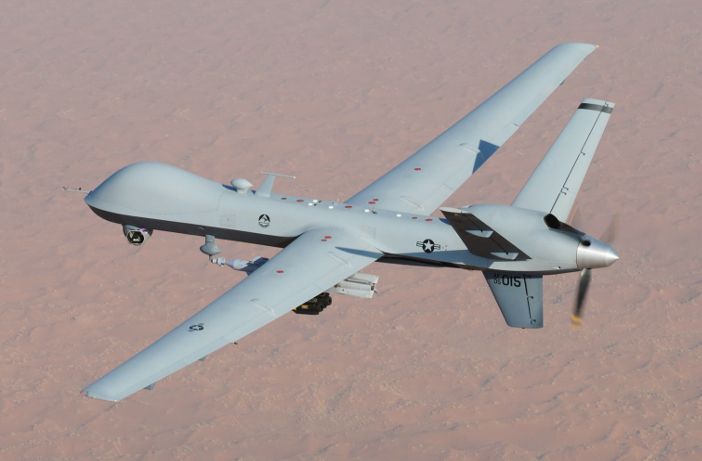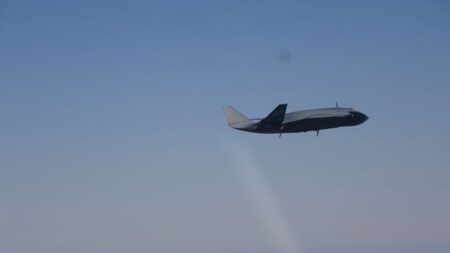General Atomics Aeronautical Systems has used its second full-scale MQ-9B to conduct successful lightning tests at its facility in Poway, California, last month.
The test was conducted between engineers from General Atomics and lightning protection system developer NTS Pittsfield.
The MQ-9B is General Atomics’ latest version of the Predator B drone. The Predator is using the same lightning protection technology that the company’s MQ-25 unmanned aerial refueling tanker will use if it gets the go-ahead from the US Navy.
A scaled lightning current was injected onto the aircraft structure, simulating a direct lightning strike. The current flowed along the aircraft structure and exited from a predetermined return location.
Results from the test verified the lightning protection design for the drone and confirmed the interactions between the airframe structure, integrated equipment and cabling configuration.
David R Alexander, president of Aircraft Systems for General Atomics Aeronautical Systems said, “One of the important design goals for MQ-9B is to deliver a RPA that can be certified to fly in national airspace.
“The successful completion of these lightning tests is an extremely important step toward achieving airworthiness certification in segregated airspace.”
The baseline MQ-9B aircraft is named SkyGuardian and the maritime surveillance variant is called SeaGuardian.
MQ-9B is a certifiable version of the company’s MQ-9 Predator B product line. Its development is the result of a five-year company-funded effort to deliver a RPA that can meet the stringent airworthiness certification requirements of various military and civil authorities, including the UK Military Airworthiness Authority (MAA) and the US FAA.
A weaponized variant of the system is being acquired by the UK Royal Air Force (RAF) under the PROTECTOR RG Mk 1 program.
June 19, 2018





